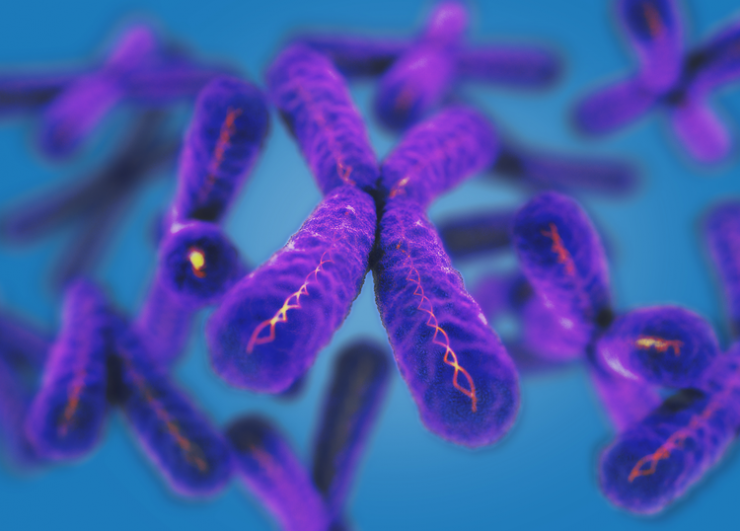3D Signatures (OTCQB:TDSGF; TSXV:DXD; FSE:3D0) has reported positive results from a preliminary analysis of trial data for Telo-HL, its test for Hodgkin’s lymphoma (HL) that is designed to personalize treatment for newly diagnosed patients.
“The results showed that the company’s TeloView platform is able to distinguish, with a high degree of statistical significance, multiple differences between a patient group that responds to standard ABVD chemotherapy, and a group that relapses or is refractory to treatment within the first 12 months,” CEO, Jason Flowerday, says in an interview with BioTuesdays.
ABVD is the standard-of-care, first-line chemotherapy regimen used in the treatment of HL that consists of doxorubicin, bleomycin, vinblastine and dacarbazine.
“We believe these results from the application of our TeloView platform to HL are so strongly positive, we can now even more confidently proceed with developing the final multivariate scoring model for the Telo-HL test to predict response at the individual patient level,” he contends.
“The ability to determine, via a blood test, which cancer patients should be prioritized for treatment would be a true game changer.”
The company remains on track to complete all phases of the test development and analytical validation by April 2018, he adds.
Mr. Flowerday says 3DS is considering making the test available broadly for research use and including it in HL clinical trials as part of a pharma services strategy that is in development.
“This milestone serves as an important proof of principle that our proprietary TeloView platform is highly robust and applicable to some tough cancers without effective biomarkers, and others which affect much larger patient populations,” he adds.
3DS focused on HL because the treatment plan for this form of cancer is currently based on a trial and error system of testing different therapies to explore which, if any, a patient responds to.
Mr. Flowerday also says the HL test is the basis for accelerating development of other tests with major collaborators interested in TeloView’s potential to personalize treatment for prostate cancer, which is the furthest along, for lung cancer, and for multiple myeloma.
“We have ongoing as well as newly planned pilot studies and collaborations with world oncology leaders that we expect to kick off later this year to build on the HL work and accelerate our other tests in development,” he adds. “The ability to determine, via a blood test, which cancer patients should be prioritized for treatment would be a true game changer.”
The TeloView platform builds on the foundational work done in Dr. Sabine Mai’s Winnipeg laboratory to establish 3D telomere profiling as a novel biomarker platform. Dr. Mai is a director of 3DS and chair of its clinical and scientific advisory board. TeloView is supported by 25 clinical studies involving more than 3,000 patients and 20 different cancers, plus Alzheimer’s disease.
Mr. Flowerday explains that 3DS’ technology is based on the three-dimensional analysis of telomeres, the protective caps at the ends of chromosomes. The software platform measures genomic instability based on a 3D analysis of telomeres. Unlike many other technologies, TeloView is not dependent on sequencing mutations in the DNA to measure the stability of the entire genome.
As a result, the TeloView software platform measures the content and configuration of the genome in the cell nucleus to determine its stability, and its correspondence to either the stage of a given disease, the rate of progression of the disease, how different diseases will respond to various therapies, and a drug’s efficacy and toxicity.
“Our proprietary imaging and analysis software is designed to go beyond identifying whether a patient suffers from a specific disease or condition,” he contends. “Instead, the TeloView platform is designed to inform clinicians and patients how to personalize treatment and best manage an individual’s disease based on their unique TeloView Score.”
Currently, there is no biomarker that can predict the 15% to 20% of patients that will fail standard ABVD chemotherapy when first diagnosed with Hodgkin’s lymphoma, he adds.
For the past year, 3DS has analyzed tissue samples from some 400 HL patients, who were subsequently treated with ABVD chemotherapy, contributed from hospitals in Canada and Europe. During the study, Mr. Flowerday says the company perfected its chemical assay, microscopy and processed all cell types through its TeloView algorithm.
Blinded data from the study were shared with 3DS’ statistical partner, BioStat Solutions, who was unblinded and compared the TeloView data with the corresponding clinical outcomes for patients, and identified highly significant group differences across multiple TeloView parameters, Mr. Flowerday says. “BSSI confirmed our analysis as being extremely accurate.”
Ronald Bromley, CEO of BioStat Solutions, says his company is excited to be collaborating with 3DS, “helping them ensure the quality of the data being used is to the highest standards, and that they are poised to deliver the best possible analysis of this predictive technology for HL treatment.”
BioStat Solutions is now building a final predictive scoring model to test and determine the sensitivity and specificity of Telo-HL’s performance in predicting ABVD response on further of HL patient samples based on their telomere profile.
“We have now reached a point where the data coming out of our TeloView platform is significant in telling us which patients are responders to ABVD chemotherapy and which patients will relapse to therapy,” he adds.
In addition, 3DS intends to submit the completed test development and validation work for peer-review and publication in a top-tier medical journal in the latter half of 2018.
“We expect Telo-HL to benefit patients seeking personalized treatment and to provide significant cost savings to payers and insurers that are currently burdened with expensive treatments and procedures that may not be necessary if patients could be considered for more targeted and effective therapies at the outset of treatment,” he adds.







